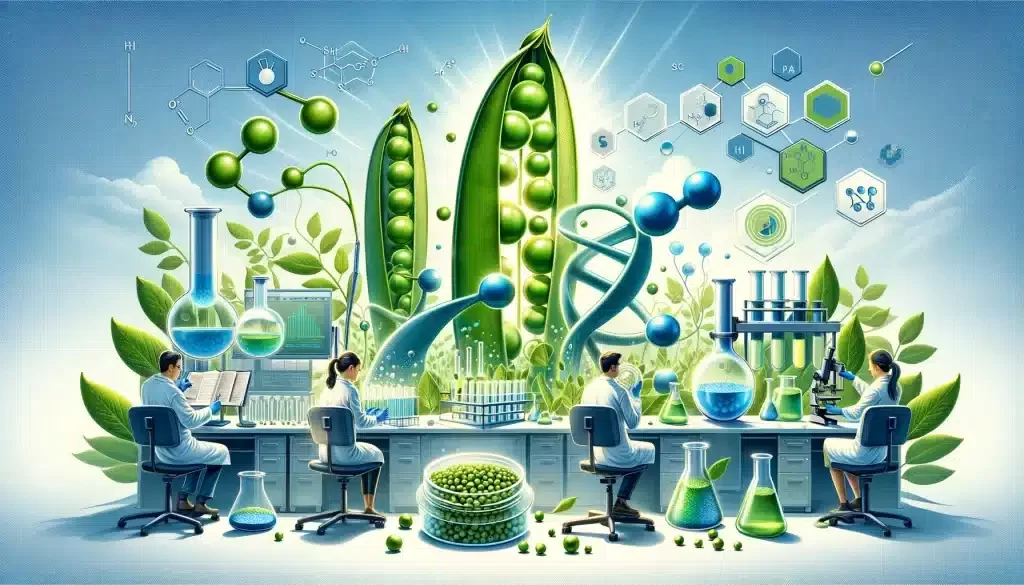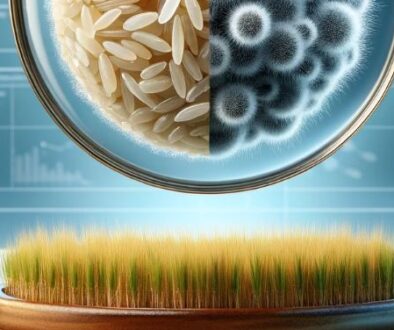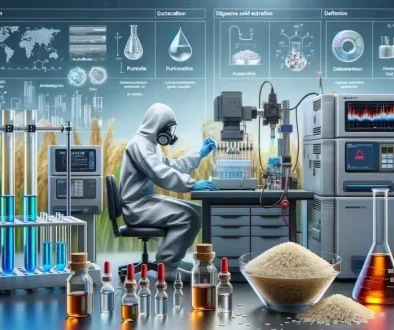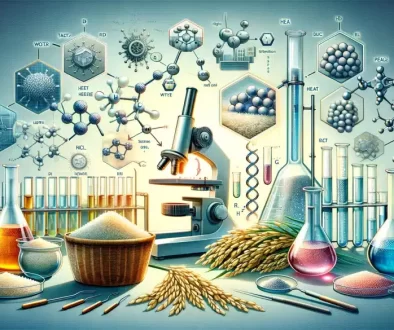The Current State of Research on Antioxidant Peptides from Peas
Explore the latest research on pea antioxidant peptides, their preparation methods, mechanisms, and debittering techniques for enhanced food applications.
Keywords: Pretreatment; enzymatic hydrolysis; pea peptides; bitterness; antioxidant activity
Mechanisms of Antioxidant Peptides
Antioxidant peptides operate through mechanisms such as Hydrogen Atom Transfer (HAT) or Single Electron Transfer (SET). In HAT, a heteroatom separates from a proton via Solvent-Assisted Proton Loss (SAPL), allowing protons to oscillate within interacting molecules depending on the system’s acidity or basicity. This process enables antioxidant peptides to quench ROO· through hydrogen transfer, typically assessed by the bond dissociation energy of the peptide’s H-X group. Peptides containing amino acids like Tyrosine (Tyr) and Histidine (His) usually rely on the HAT mechanism, while those rich in His, Cysteine (Cys), and Tyr adopt the SET mode. The activity of antioxidant peptides within biological systems largely depends on the activity of antioxidant enzymes. Peptides and hydrolysates from plant and grain sources are associated with mechanisms involving antioxidant enzymes, lipid reduction, intracellular reactive oxygen species, and thiol homeostasis. Wheat peptides, for instance, have shown to reduce apoptosis in SH-SY5Y cells and modulate antioxidant pathways and cell death by increasing Bcl-2/Bax proteins. Corn peptides protect liver function by reducing serum aminotransferase activity, inhibiting lipid peroxidation, and increasing SOD activity and glutathione levels in the liver. Oat peptides enhance oxidative stress-related enzyme activities and the production of cellular glutathione, exhibiting antioxidant effects in HepG2 cells.
Preparation of Pea Antioxidant Peptides
Chemical treatment can enhance the antioxidant capabilities of pea proteins and their peptides. Studies have shown that phenolic treatment under various heating conditions improves superoxide dismutase activity and DPPH scavenging ability in pea proteins, with ferulic acid being particularly effective. Pea protein-tannic acid complexes formed through protein-polyphenol interactions exhibit higher lipid oxidation stability than natural pea proteins. Alkaline pH-treated pea protein isolates have shown increased antioxidant activity. Conjugation of pea protein with gum arabic through Maillard reaction-driven chemical processes has demonstrated superior lipid oxidation inhibitory capabilities in corn oil-in-water emulsions. However, chemical methods face challenges in reaction control and specificity, limiting their widespread application in producing bioactive peptides. Enzymatic treatment offers a safer and common approach to producing pea protein peptides with antioxidant properties. Factors such as enzyme type, amino acid composition, degree of hydrolysis, and hydrolysis time influence the antioxidant characteristics of pea peptides. Multi-enzyme treatments have been found to enhance hydrolysis and antioxidant activity compared to single-enzyme methods. Hydrolysates obtained from pea protein with a higher content of hydrophobic and aromatic amino acids exhibit the strongest free radical scavenging and metal chelating activities, effectively inhibiting linoleic acid oxidation. Physical pretreatments like high pressure (HP), high temperature (HT), and electron beam irradiation (EBI) combined with enzymatic hydrolysis have shown to produce pea peptides with enhanced antioxidant activity. These methods have demonstrated significant improvements in antioxidant properties compared to control treatments, highlighting the importance of selecting appropriate physical pretreatment techniques to enhance the antioxidant performance of pea peptides.
Challenges in Preparing Pea Antioxidant Peptides
The production of pea bioactive peptides, including antioxidant peptides, faces challenges such as low yields and the formation of insoluble precipitates during hydrolysis, which hampers the efficient development and utilization of pea protein. Additionally, much research focuses on the separation, purification, and structural identification of active peptides. Compared to pure peptides, hydrolysates obtained through limited enzymatic hydrolysis offer a more economical and effective application. However, the bitterness of pea peptides limits their use as food ingredients or additives. As hydrolysis progresses, sensory characteristics can change unfavorably, with bitterness and astringency being significant factors limiting acceptance by sensory panels. Techniques to produce pea peptides with high umami and low bitterness have been developed, and methods for debittering protein peptides have been reported. However, systematic studies addressing the yield and bitterness issues of pea antioxidant peptides remain limited.
Progress in Debittering Research
The formation of bitterness in peptides results from the exposure of more hidden hydrophobic peptides and amino acids as proteins are extensively degraded by enzymes. The hydrophobic peptides consist of two functional units: the binding unit (BU) and the stimulating unit (SU), with the side chains providing the BU for the bitter taste receptors and the SU composed of bulky basic or transparent hydrophobic groups determining the bitterness. Factors influencing bitterness in peptides include hydrophobicity, degree of hydrolysis, peptide molecular weight, enzyme type, and amino acid sequence. The hydrophobicity of peptides, indicated by the transition of amino acid chains from ethanol to water (Q value), serves as a criterion for bitterness, with a higher Q value and lower molecular
For more further detailed information of this research, feel free to contact our team for asssistance.
Original research by Xia Yixuan, Zhang Hui, Hui Ju, Mu Wanmeng (Food Engineering, Jiangnan University, Wuxi 214122)
About ETprotein:
ETprotein, a reputable rice protein Chinese factory manufacturer and supplier, is renowned for producing, stocking, exporting, and delivering the highest quality organic bulk vegan protein and plant proteins. They include Organic rice protein, clear rice protein, pea protein, clear pea protein, pumpkin seed protein, sunflower seed protein, mung bean protein, etc. Our offerings, characterized by a neutral taste, non-GMO, allergen-free attributes, cater to a diverse range of industries. We serve nutraceutical, pharmaceutical, cosmeceutical, veterinary, as well as food and beverage finished product distributors, traders, and manufacturers across Europe, USA, Canada, Australia, Thailand, Japan, Korea, Brazil, and Chile, among others.
Our specialization includes exporting and delivering tailor-made protein powder and finished nutritional supplements. Our extensive product range covers sectors like Food and Beverage, Sports Nutrition, Weight Management, Dietary Supplements, Health and Wellness Products, and Infant Formula, ensuring comprehensive solutions to meet all your protein needs.
As a trusted company by leading global food and beverage brands and Fortune 500 companies, ETprotein reinforces China’s reputation in the global arena. For more information or to sample our products, please contact us and email sales(at)ETprotein.com today.












